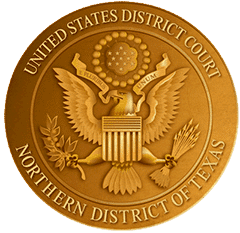Liability is a term you might hear often in personal injury cases, but what does it really mean? If you’re a Texas resident dealing with a personal injury claim, understanding liability can make all the difference when it comes to protecting your rights and seeking the compensation you deserve.
This blog will break down liability, explain how it’s determined, highlight the different types, and offer insights into its importance under Texas law.
What Is Liability in Personal Injury Law?
Liability, in legal terms, refers to a person or entity’s legal responsibility for their actions or inactions that result in harm to another. In the context of personal injury law, this could mean being accountable for injuries caused due to negligence, recklessness, or intentional acts.
Simply put, liability establishes who is at fault and responsible for compensating the injured party for damages like medical bills, lost wages, and emotional distress.
How Is Liability Determined in Personal Injury Cases?
Determining liability in personal injury cases often involves establishing these key elements:
- Duty of Care: Did the at-fault party have a responsibility to ensure the safety of the victim? For example, a driver has a duty to follow traffic laws to avoid accidents.
- Breach of Duty: Was the duty of care violated? Negligence (such as running a red light) often constitutes a breach.
- Causation: Did the breach directly cause the injury? There must be a clear link between the responsible party’s actions and the harm caused.
- Damages: Are there measurable losses, such as medical bills or lost income, that arose from the injury?
Investigations, evidence such as accident reports, and witness testimony typically help determine liability in personal injury lawsuits.
Different Types of Liability
Not all liability is the same, and it can vary depending on the nature of the incident or the involvement of multiple parties. Here’s an overview of the main types of liability relevant to personal injury cases:
- Strict Liability:
Under strict liability, a person or entity is responsible for damages regardless of intent or negligence. This often applies in cases involving defective products or dog bites in Texas.
- Comparative Liability (Fault):
Texas follows what’s called a modified comparative fault system. Under this rule, individuals can recover compensation as long as they are not more than 50% at fault for the accident. For example, if you are found to be 20% at fault, your compensation amount will be reduced by 20%.
- Joint and Several Liability:
Multiple parties can share liability in some cases. For example, after a car accident involving several negligent drivers, Texas law may allow injured parties to seek full compensation from any party deemed significantly responsible.
Examples of Liability in Action
Knowing how liability applies can make it easier to understand its importance in real-world scenarios. For instance:
- Premises Liability (Slip and Fall Cases): A store owner may be liable if someone slips on a wet floor that wasn’t marked with a warning sign.
- Auto Accidents: Liability arises when a driver runs a red light and causes an accident.
- Medical Malpractice: A doctor may be liable if their negligent care results in harm to the patient.
- Workplace Injuries: Employers could be found liable if proper safety measures aren’t implemented.
Why Liability Matters for Texas Residents
Texas has specific laws that can influence personal injury cases, making it crucial for residents to understand their rights. For example, Texas uses a two-year statute of limitations for filing personal injury claims. Waiting too long could mean losing your chance to hold the at-fault party liable.
Furthermore, Texas’s modified comparative fault system makes it essential to clearly demonstrate the percentage of liability to secure your rightful compensation. Since Texas doesn’t cap most personal injury damages, ensuring liability is accurately attributed could significantly impact the financial relief you receive.
How to Protect Your Rights and Seek Compensation
If you’ve been injured due to someone else’s negligence, here are steps you can take to protect your rights and maximize your chances of recovering compensation:
- Document Everything: Gather evidence like photos, witness information, and accident reports.
- Seek Medical Attention: Prioritize your well-being and create medical records as evidence.
- Consult a Personal Injury Attorney: Navigating liability laws in Texas can be tricky, but an experienced personal injury attorney can guide you through the complexities and fight for your rights.
Remember, understanding liability not only helps you seek rightful compensation but also arms you with the knowledge to avoid being unfairly held accountable in incidents where fault disputes arise.
Final Thoughts
Liability is a critical concept in personal injury cases. From determining who is responsible to understanding how Texas laws apply, being informed can make a world of difference in protecting your rights. Whether it’s a car accident, a slip-and-fall incident, or a workplace injury, knowing how liability works empowers you to take the right steps toward justice and compensation.




























